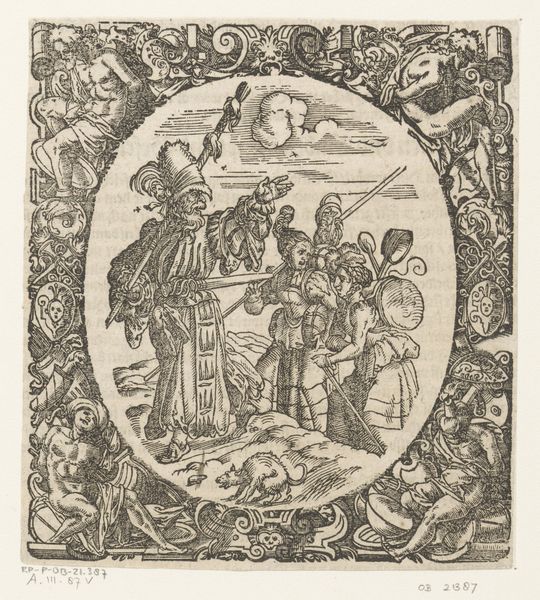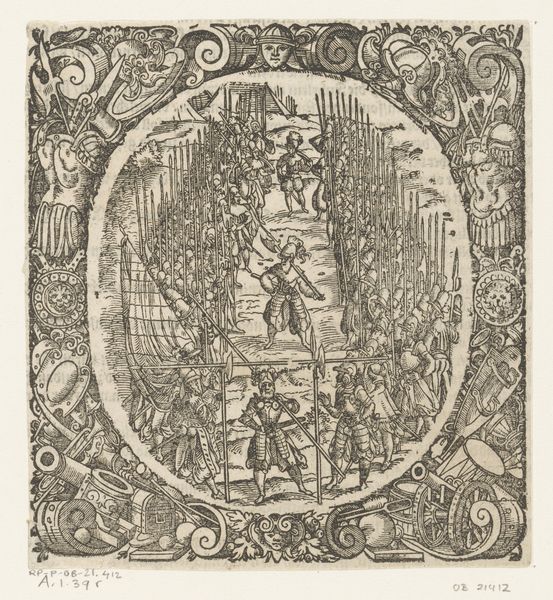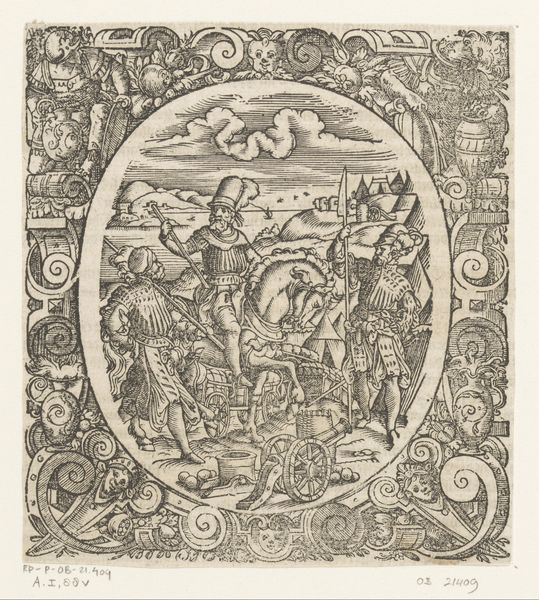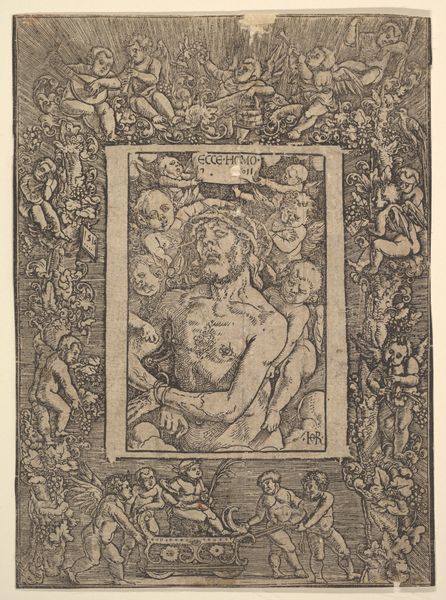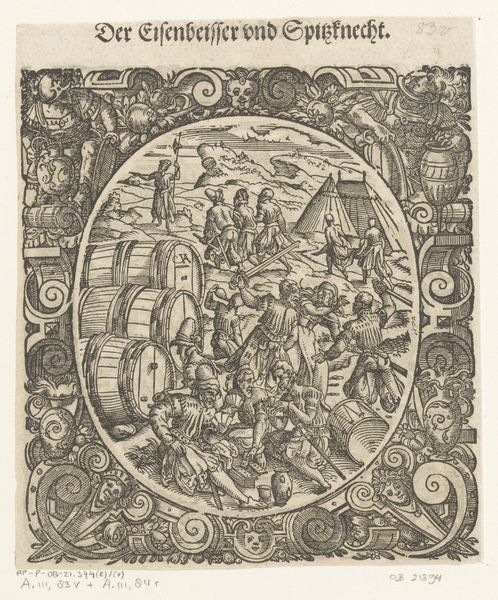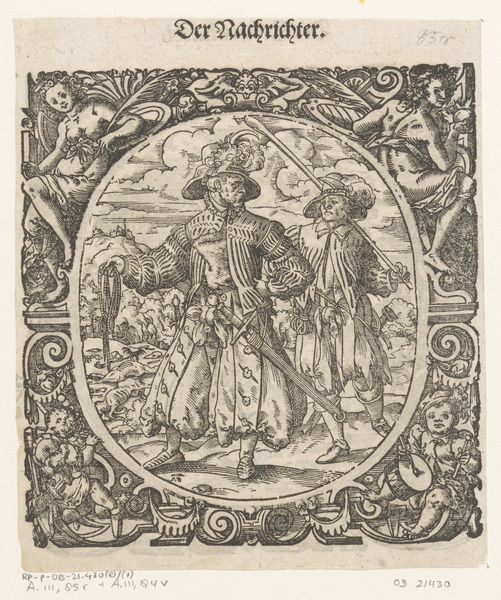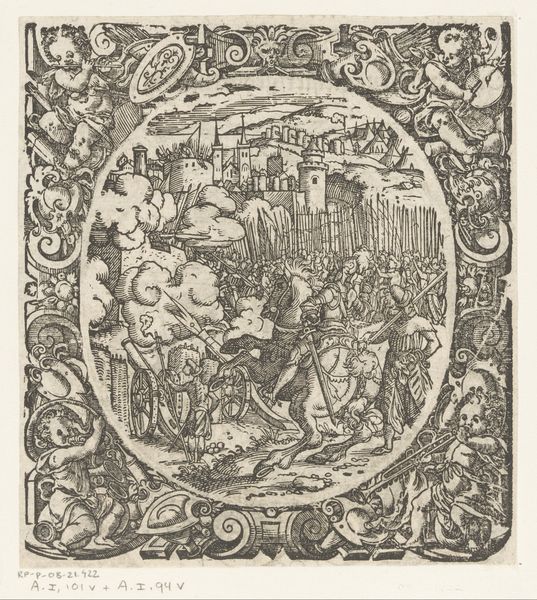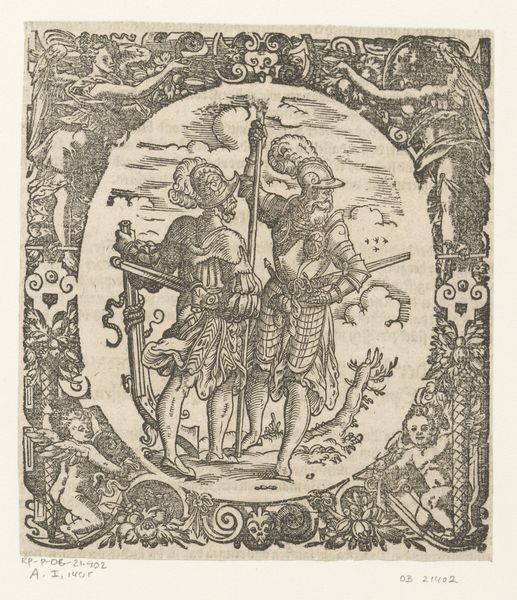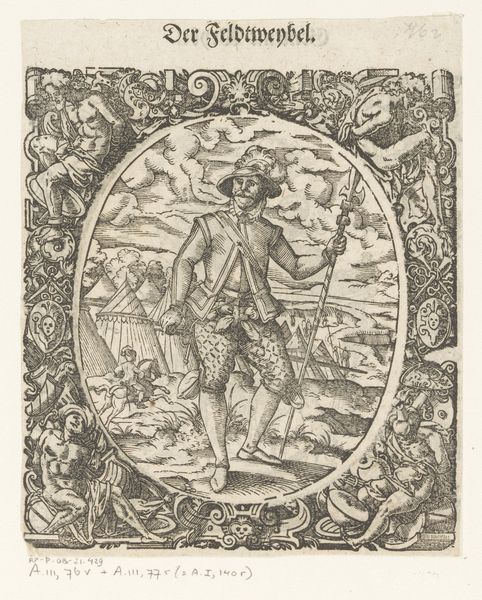
print, engraving
#
medieval
#
pen drawing
# print
#
pen illustration
#
pen sketch
#
old engraving style
#
figuration
#
pen-ink sketch
#
pen work
#
sketchbook drawing
#
cityscape
#
history-painting
#
coloring book page
#
engraving
#
doodle art
#
intricate and detailed
Dimensions: height 144 mm, width 129 mm, height 113 mm, width 88 mm
Copyright: Rijks Museum: Open Domain
Curator: Look at this engraving—it's "Beschieten van een kasteel op een heuvel," or "Bombardment of a Castle on a Hill," made in 1573 by Jost Amman. What jumps out at you? Editor: Utter chaos, rendered meticulously! The tight lines and the sheer busyness evoke such energy and destruction all at once. There’s such weight in those cannons; you can almost feel the reverberations in your chest. Curator: Yes, Amman has crammed so much detail in here. He's depicting siege warfare, with cannons blazing at a hilltop castle. And notice how the scene is framed by allegorical figures – quite a decorative touch for such a violent scene. Editor: The frame almost mocks the violence, doesn't it? This print clearly fetishizes weaponry, reducing the brutal reality of the medieval battle to a product, as much as artwork, really. Curator: Fetishizes is a strong word, though, I think Amman captures a crucial moment in European military history as warfare was rapidly changing in the late Renaissance with the rise of gunpowder weaponry. Editor: Agreed, gunpowder changed the scale and experience of work for many, like the metalworkers producing cannons—their craft militarized and repurposed, literally forging tools of power for wealthy rulers, transforming lives with explosions that forever altered landscapes and social hierarchies. Curator: That's fascinating to consider how these tools affected the artist's practice as well, influencing art styles across Europe, for example. You know, looking closer at the castle, the way Amman depicts the fortifications almost seems…optimistic? As though these walls could possibly hold against such destructive power. Editor: Well, maybe the illusion speaks to something deeper, to the human drive for both destruction and permanence that lies within each of us! And to me, as someone committed to understanding social histories through labor and consumption, these images say as much about that need as they do about war! Curator: I hadn't considered it in that light, really, and now it certainly leaves an even bigger impact on me too, this little scene encapsulating our ambition, futility, all at once. Editor: Absolutely, and next time you view cannons in a historical art piece, perhaps reflect on the laborers’ experience rather than just the glorious commander.
Comments
No comments
Be the first to comment and join the conversation on the ultimate creative platform.
